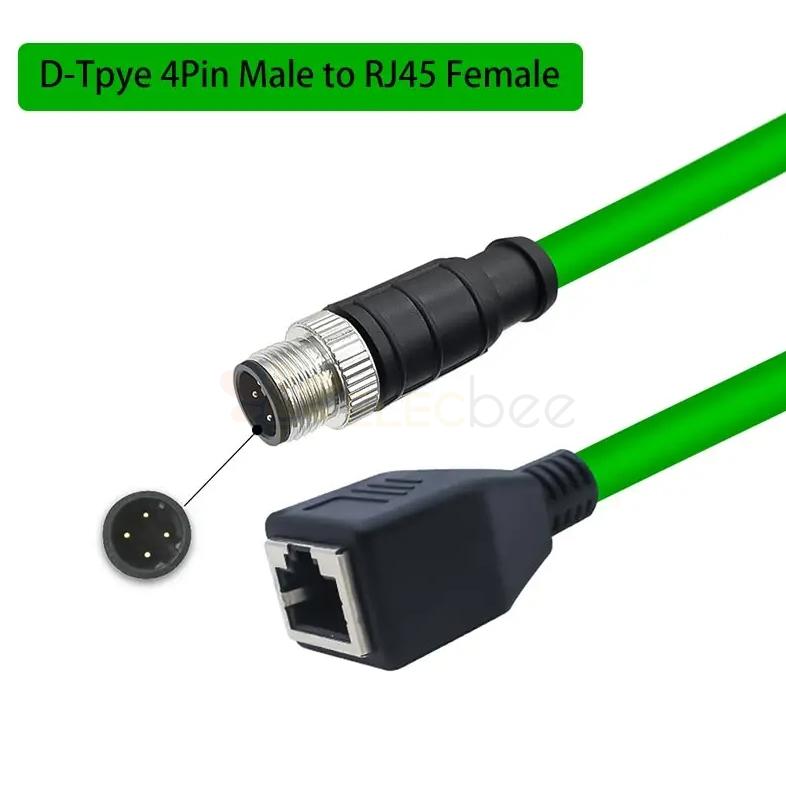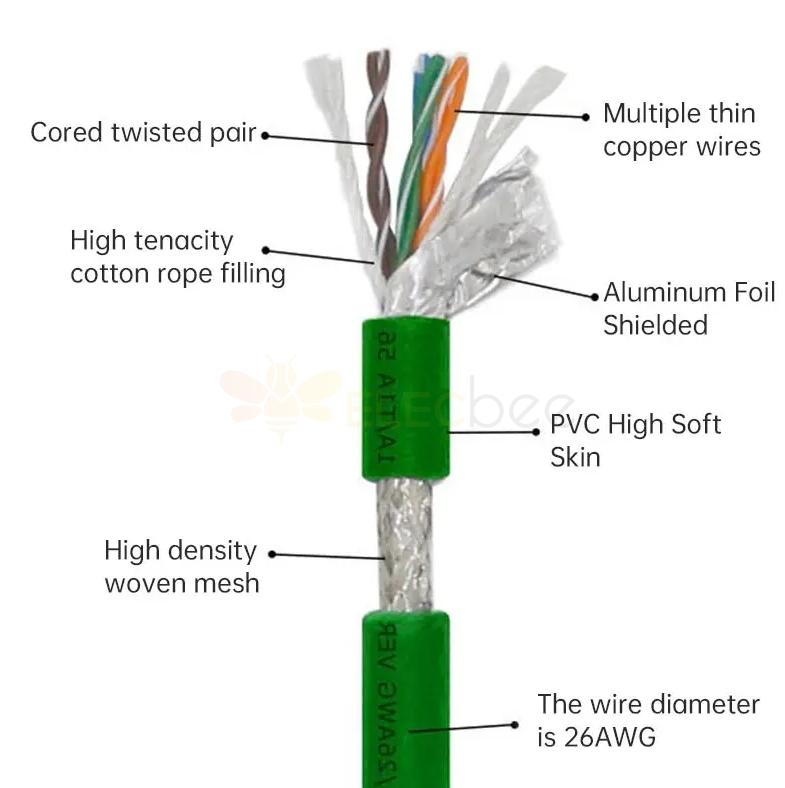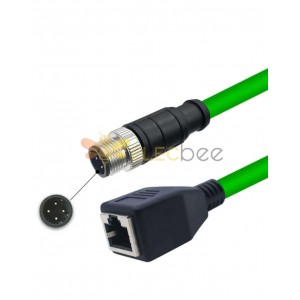In today's fast-paced technological era, the demand for reliable, efficient, and sturdy network connections is paramount. Amid this ever-evolving landscape, M12 D-Coded Ethernet cables stand out, especially in the industrial sector. This comprehensive guide aims to provide insights into the significance and applications of these cables.
A Glimpse into the Basics
M12 Ethernet cables with D coding serve as successors to traditional RJ45 connectors. They match the specifications of a Category 5 modular jack, as delineated by the EIA/TIA standards. These cables have a unique coding system, distinguishing them from A-coded sensor-brake wiring and B-coded counterparts, which cater to specific fieldbuses.

Distinct Features and Advantages
- Technical Merits: Crafted for excellence, these cables come with a rated current of 1.5 A, insulation resistance ≥100 MΩ, and a contact resistance of ≤5 mΩ, ensuring reliability. Furthermore, they endure temperatures between -40°C and +90°C, manifesting their resilience.
- Robust Construction: From gold-plated brass contacts to the durable zinc-alloy nickel-plated shell, these cables are built to last. Customizable materials like PVC, PUR, TPU, RU, and PTFE cater to diverse requirements, while the anti-vibration thread locking mechanism enhances stability.
- Transmission Excellence: Offering an impressive 100 MHz bandwidth and 1.25Gb/s transfer rate, M12 cables guarantee swift and seamless data transmission, thanks to the oxygen-free copper conductor.
- Stellar Protection: Tailored for challenging industrial arenas, these cables feature multi-layered shielding against external interference and an IP67 waterproof rating.
- Global Compatibility: Aligned with global standards like the IEC 61076-2-101 Industry 4.0 agreement and the NEMA2000, these cables ensure universal adaptability.
Diverse Applications and Real-World Cases
The utility of M12 D-Coded Ethernet cables transcends boundaries, finding applications across various sectors:
- Miniature Sensors: In advanced manufacturing units, sensors play a pivotal role in monitoring equipment health. These cables ensure sensors transmit data reliably, optimizing machinery performance.
- Industrial Cameras: For quality control in production lines, high-definition industrial cameras relay real-time imagery. For instance, in automobile manufacturing, these cables help cameras monitor paint application processes, ensuring uniform coatings.
- Electrical Bikes: Modern e-bikes come equipped with advanced diagnostics. M12 cables ensure continuous data flow between sensors and displays, enhancing rider experiences.
- Packaging, Labeling & Logistics: Automated packaging units employ these cables to synchronize operations. A real-world example would be in beverage factories where these cables coordinate bottle filling, capping, and labeling, ensuring efficient production.
- Ethernet Communication Protocols: Systems such as Profinet, Ethernet, and CC-Link IE, prevalent in industries, heavily rely on these cables for data exchange. In a practical scenario, a globally distributed company might use M12 D-Coded cables to ensure seamless data communication across its plants, ensuring real-time inventory updates.

Scenario: Automated Beer Bottling Plant
Setting: Located on the outskirts of Munich, Germany, "BrauTech" is a renowned brewery that recently underwent a significant transformation to become a smart factory. Recognizing the need for consistent and high-speed data communication, BrauTech incorporated M12 D-Coded Ethernet cables throughout their operations.
Challenge: BrauTech’s production line includes multiple stations: fermentation, filtering, bottling, labeling, and packaging. Each station is equipped with sensors, cameras, and automated machines that need to communicate in real-time to ensure seamless production. Any lag or data loss can lead to production halts, wasted resources, or product defects.
Solution: Leveraging the robustness and high-speed data transmission of the M12 D-Coded Ethernet cables:
- Sensors: Sensors in the fermentation tanks relay real-time data on temperature, pressure, and fermentation rate. Using the M12 cables, this data is instantly transmitted to the control room. If any irregularities are detected, adjustments are made immediately.
- Industrial Cameras: As bottles move on the conveyor, high-definition cameras inspect them for any defects or foreign particles. The M12 cables ensure that the images are instantly sent to the quality control unit, where any defective bottles are identified and removed.
- Automated Labeling: The labeling machines need precise synchronization with the conveyor's speed to ensure labels are accurately placed. M12 cables play a crucial role, ensuring that the machine receives real-time data about the conveyor's speed and adjusts its operations accordingly.
Outcome: By integrating M12 D-Coded Ethernet cables, BrauTech achieved:
- A significant reduction in production halts.
- Improved product quality with fewer defects.
- Enhanced data analytics leading to optimized operations and reduced wastage.
Conclusion: This practical example from BrauTech underscores the indispensable role of the M12 D-Coded Ethernet cables in modern industries. As factories worldwide continue their transition to smart operations, the demand for these reliable and efficient cables is set to soar.
Concluding Thoughts
The M12 D-Coded Ethernet cable is more than just a cable. It’s a testimony to technological advancement, designed to meet the demanding needs of modern industries. Its versatility, combined with unmatched performance, makes it indispensable.
Thinking of an industrial revamp or initiating a new networking project? Explore the range of M12 D-Coded Ethernet cables on Elecbee, where quality meets reliability.







